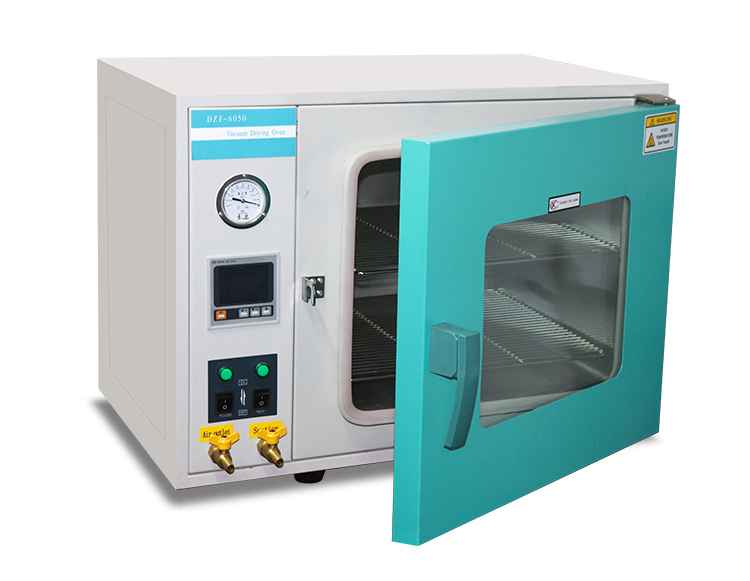Vacuum drying oven principle
Vacuum drying oven principle
The principle of vacuum drying is to place the material to be dried in a closed drying room, and use the vacuum system to vacuum while heating the material to be dried, so that the moisture inside the material diffuses to the surface through the pressure difference or concentration difference, and the water molecules are on the material. The surface obtains enough kinetic energy, after overcoming the mutual attraction between molecules, it escapes to the low-pressure space of the vacuum chamber, thereby being pumped away by the vacuum pump.
In the vacuum drying process, the pressure in the drying chamber is always lower than the atmospheric pressure, the number of gas molecules is small, the density is low, and the oxygen content is low, so it can dry materials that are prone to oxidation and deterioration, and flammable and explosive dangerous goods. It can play a certain role in disinfection and sterilization of medicines, foods and biological products, which can reduce the chance of contamination of materials or inhibit the growth of certain bacteria.
Vacuum drying can eliminate the surface hardening phenomenon that is easy to occur under normal pressure drying. Atmospheric hot air drying, a fluid boundary layer is formed on the surface of the material to be dried, and the heated vaporized water vapor diffuses into the air through the fluid boundary layer, and the moisture inside the dried product moves to the surface. If its moving speed cannot keep up with the evaporation speed on the surface of the boundary layer, the water film of the boundary layer will break, and the surface of the dried material will appear partial dry cracking, and then expand to the entire outer surface to form surface hardening. The pressure difference between the inside and the surface of the vacuum-dried material is large. Under the action of the pressure gradient, the water will quickly move to the surface without surface hardening. At the same time, the drying rate can be increased, the drying time can be shortened, and the equipment operation cost can be reduced.
Vacuum drying can overcome the solute loss caused by hot air drying. Hot air drying causes a large temperature gradient to be formed inside and on the surface of the material to be dried, which promotes the dispersion of certain components in the material to be dried. Especially food, it will lose its aroma and affect its taste. During vacuum drying, the temperature gradient inside and outside the material is small, and the water as the solvent moves independently by reverse osmosis, which overcomes the phenomenon of solute loss. Some dried materials contain valuable or useful material components and need to be recycled after drying; some dried materials contain toxic and harmful substances that are harmful to human health. After drying, the exhaust gas is not allowed to be directly discharged into the space environment. It needs to be processed in a centralized manner. Only vacuum drying can conveniently recover these useful and harmful substances, and can achieve good sealing. In the sense of environmental protection, some people call vacuum drying "green drying".


